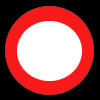|
|
|
‘LIGHT!’, as Igmar Bergman so passionately described in “Laterna Magica”, is the ephemeral medium that directors and cinematographers use to draw out the essence of a film: its style, narrative, and social, political or geographical mood. Light filters the picture with a rich palette of tones, colours, brightness, and contrast. It blends, models and transforms other textures on the set such as weather, architecture, landscape and costumes to create a multiplicity of visual effects on screen. Thus, many have defined the art of cinematography as painting with light. 
The use of light has matured dramatically since the first films. It was not always an artistic or dramatic element. In the early history of cinema, light was simply a technical priority. Without it, images could not be recorded on negatives. The earliest film stock had such low sensitivity that gas lamps were simply not powerful enough for a proper exposure. Furthermore filmmaking predated the widespread use of electricity and development of light bulbs or fluorescent tubes. Due to these technical limitations, films were first made outdoors or in glass studios, which are solariums with a stage built in the middle. These studios are often located on top of buildings to allow for maximum access to natural light. They were well suited for the film styles of the late 1890s to late 1910s. Early directors saw film as an extension of live theatre, where the staged drama was simply recorded onto negatives. Since, in their barest form, glass studios were mini theatre stages, they were the location of choice for filming. They also allowed for greater manipulation of natural lights. Movable cotton screens were developed to be drawn over the glass to diffuse natural lights. Also, a revolving stage was built to follow sun angles, which dramatically increased production time during the day. German studios employed a specialist called the “sun-lookout” to synchronize filming with gaps between clouds so that shots may be completed while the sun shone through unobstructed onto the stage. Later, arc lights and flood lights were added to supplement natural lighting in these studios.
|
|